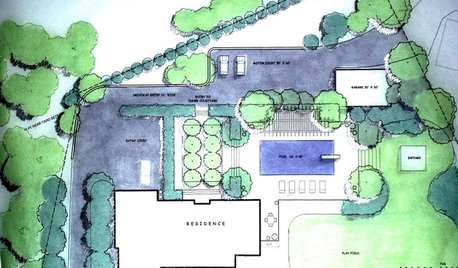Need Help in Calculation, Please
beth4
15 years ago
Related Stories

CONTRACTOR TIPSHow to Calculate a Home’s Square Footage
Understanding your home’s square footage requires more than just geometry
Full Story
CURB APPEAL7 Questions to Help You Pick the Right Front-Yard Fence
Get over the hurdle of choosing a fence design by considering your needs, your home’s architecture and more
Full Story
REMODELING GUIDESKey Measurements for a Dream Bedroom
Learn the dimensions that will help your bed, nightstands and other furnishings fit neatly and comfortably in the space
Full Story
ORGANIZINGGet the Organizing Help You Need (Finally!)
Imagine having your closet whipped into shape by someone else. That’s the power of working with a pro
Full Story
DECLUTTERINGDownsizing Help: How to Get Rid of Your Extra Stuff
Sell, consign, donate? We walk you through the options so you can sail through scaling down
Full Story
MOVINGRelocating Help: 8 Tips for a Happier Long-Distance Move
Trash bags, houseplants and a good cry all have their role when it comes to this major life change
Full Story
BATHROOM DESIGNKey Measurements to Help You Design a Powder Room
Clearances, codes and coordination are critical in small spaces such as a powder room. Here’s what you should know
Full Story
HOME OFFICESQuiet, Please! How to Cut Noise Pollution at Home
Leaf blowers, trucks or noisy neighbors driving you berserk? These sound-reduction strategies can help you hush things up
Full Story
GARDENING GUIDESGreat Design Plant: Ceanothus Pleases With Nectar and Fragrant Blooms
West Coast natives: The blue flowers of drought-tolerant ceanothus draw the eye and help support local wildlife too
Full StoryMore Discussions








bpgreen
digit
Related Professionals
Saint Louis Park Landscape Architects & Landscape Designers · Paradise Landscape Architects & Landscape Designers · Hartford Landscape Contractors · Allentown Landscape Contractors · Aberdeen Landscape Contractors · Cockeysville Landscape Contractors · Danvers Landscape Contractors · Ellensburg Landscape Contractors · Fort Wayne Landscape Contractors · Golden Landscape Contractors · Lakeville Landscape Contractors · Stallings Landscape Contractors · White Bear Lake Landscape Contractors · Beverly Hills Solar Energy Systems · Chatsworth Solar Energy Systemsbeth4Original Author
bpgreen
digit
bpgreen
david52 Zone 6
digit
bpgreen
beth4Original Author
digit
david52 Zone 6
bpgreen
david52 Zone 6
jaliranchr
bpgreen
digit
jaliranchr
beth4Original Author